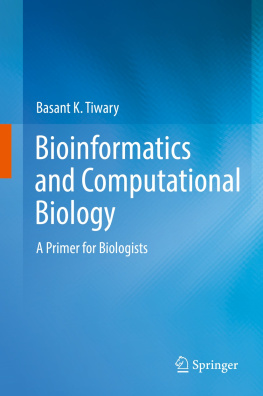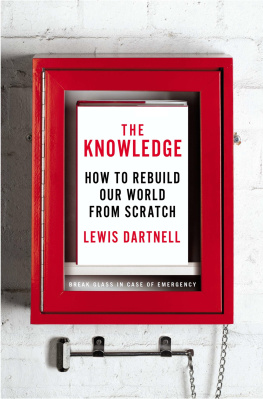
Biofabrication
The MIT Press Essential Knowledge series
A complete list of the titles in this series appears at the back of this book.
Biofabrication
Ritu Raman
The MIT Press | Cambridge, Massachusetts | London, England
2021 Massachusetts Institute of Technology
All rights reserved. No part of this book may be reproduced in any form by any electronic or mechanical means (including photocopying, recording, or information storage and retrieval) without permission in writing from the publisher.
The MIT Press would like to thank the anonymous peer reviewers who provided comments on drafts of this book. The generous work of academic experts is essential for establishing the authority and quality of our publications. We acknowledge with gratitude the contributions of these otherwise uncredited readers.
This book was set in Chaparral Pro by New Best-set Typesetters Ltd.
Library of Congress Cataloging-in-Publication Data
Names: Raman, Ritu, author.
Title: Biofabrication / Ritu Raman.
Description: Cambridge, Massachusetts : The MIT Press, [2021] | Series: The MIT Press essential knowledge series | Includes bibliographical references and index.
Identifiers: LCCN 2020047113 | ISBN 9780262542968 (paperback)
Subjects: LCSH: TissuesModels. | Biomedical engineeringMoral and ethical aspects. | Microfabrication.
Classification: LCC R857.T55 R36 2021 | DDC 610.28dc23
LC record available at https://lccn.loc.gov/2020047113
10 9 8 7 6 5 4 3 2 1
d_r0
In gratitude for the three engineers who have inspired me throughout my life:
Radha Raman, Raman Radhakrishnan, and K. R. Dorairaj.
Contents
Series Foreword
The MIT Press Essential Knowledge series offers accessible, concise, beautifully produced pocket-size books on topics of current interest. Written by leading thinkers, the books in this series deliver expert overviews of subjects that range from the cultural and the historical to the scientific and the technical.
In todays era of instant information gratification, we have ready access to opinions, rationalizations, and superficial descriptions. Much harder to come by is the foundational knowledge that informs a principled understanding of the world. Essential Knowledge books fill that need. Synthesizing specialized subject matter for nonspecialists and engaging critical topics through fundamentals, each of these compact volumes offers readers a point of access to complex ideas.
Preface
Biofabrication, the act of building with biological materials, may sound too technologically complex to be easily accessible. Our lived experiences in the natural world, however, give us tremendous insight into the behavior of biological materials. Each of us already has the baseline intuition we need to understand the scope and impact of this emerging scientific discipline.
Imagine yourself starting a vegetable patch in a community garden. You carry a large bag of tools, soil, seeds, and a watering can to the garden a mile away from your home and establish a small shaded plot for growing a crop of carrots. Every day, you jog to the garden to check on your carrots, water them, and run home. As the first leaves on your plants start to sprout, you notice a family of rabbits poking around your vegetable patch and sprinkle the leaves with red pepper. As time passes, your legs get stronger running to the garden every day, the carrot leaves grow larger and turn to face the sun, and the rabbits have learned not to eat your plants. This is the power of biological materials.
The living cells that make up your body, and the plants and animals that surround us, are immensely powerful. They can sense a range of external signals and adapt their form and function to best suit their environment. These behaviors manifest in many different ways, from changes in the shape of your body to changes in the learned behavior of animals, as illustrated in the example above. The synthetic world that we have built around us, while vastly complex and powerful in its own right, is still far from being able to match the responsive nature of our natural world. Our clothes do not adapt to changing weather nor do our cars become larger to accommodate a growing family. Why not?
As a mechanical engineer, I was trained to build with traditional synthetic materials, as engineers have for centuries. For most engineers, building things from the ground up using metals and plastics seems more natural, oddly enough, than building with naturally existing biological materials. Luckily, I was raised by a family of engineers who taught me to be observant of my surroundings, and I have had the privilege to pursue science education in an era when biology is converging with engineering. This intellectual environment, combined with my first job as an undergraduate at Cornell University, shifted my perspective on the materials with which engineers can (and should) build.
My first job as an undergraduate researcher was to contribute to a Cornell labs research on the effect of diet and exercise on the composition and organization of skeletal muscle. This is an elaborate way of saying that my job was to feed rats different diets, observe them running on tiny treadmills, and record the changes in their muscles. This was perhaps the first time during my academic training that I felt my experiences at school correlating to my experiences in life. I had just started running regularly and had never stopped to think about the fact that my body was changing at a cellular level to make me stronger and faster. Researching the complex mechanisms by which the rats muscles bulked up in times of need made me all the more appreciative of how regular exercise was shaping my own body. This experience made me realize, for the first time, that I was a machine. I was a biological machine whose movement was powered by skeletal muscle, just as a car is a machine whose movement is powered by an engine. But, unlike a car, I could make myself stronger when needed. I could do this because I was composed of biological materials, and this made me think that perhaps other machines should be built with biology as well.
This idea is the core of biofabrication. Building with biology, in the same way we build with synthetic materials, is a novel discipline that is rapidly changing. It has potential applications in medicine, agriculture, robotics, and beyond, and cultivating literacy around the fundamentals of this field is critical to understanding and shaping the future technological landscape of our world. While biofabrication is broadly defined as building with biological materials, which can include nucleic acids and proteins and cells of all kinds, this book focuses on biofabrication in the context of building with living cells from mammals. This focus allows us to take a closer look at some of the most impactful applications of biofabrication while still giving you the vocabulary you need to understand other forms of biofabrication you may choose to explore in the future.
Chapters 1 and 2 cover the essential knowledge required to understand the emergence and evolution of biofabrication, as well as the fundamental technology that enables building with living cells. Chapters 36 take deep dives into four applications of biofabrication that are most likely to impact our daily lives in the coming yearsnamely, tissue engineering, organs-on-a-chip, lab-grown meat and leather, and biohybrid machines. Chapters 79 present a discussion of the environmental, economic, and ethical implications of biofabrication and propose a future scientific and regulatory vision for this field and our global community.
Next page








